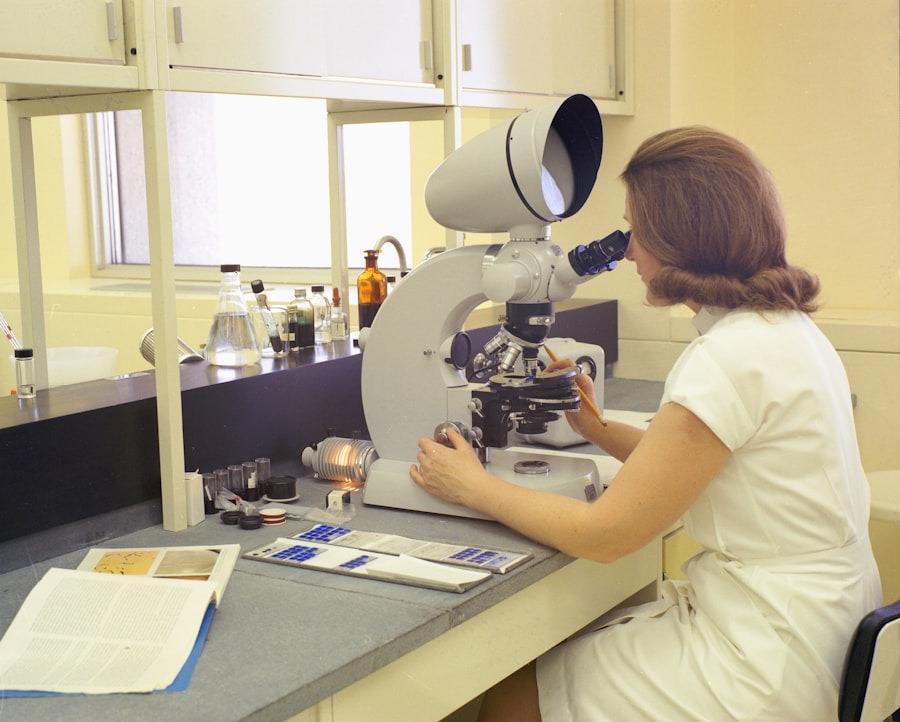Preclinical trials serve as a critical juncture in the drug development process, acting as the bridge between laboratory research and clinical application. These trials are primarily conducted in vitro (in the lab) and in vivo (in living organisms) to assess the safety, efficacy, and biological activity of new compounds before they are tested in humans. The preclinical phase is essential for identifying potential therapeutic candidates and determining their pharmacokinetic and pharmacodynamic properties.
This stage not only helps in understanding how a drug behaves in biological systems but also provides crucial data that informs the design of subsequent clinical trials. The significance of preclinical trials cannot be overstated, as they lay the groundwork for clinical research. By utilizing various models, including cell cultures and animal studies, researchers can gather preliminary data on a drug’s mechanism of action, optimal dosing, and potential side effects.
This information is vital for regulatory submissions to agencies such as the U.S. Food and Drug Administration (FDA) or the European Medicines Agency (EMA), which require comprehensive evidence of a drug’s safety profile before allowing human trials to commence. The preclinical phase is not merely a formality; it is a rigorous scientific process that demands meticulous planning and execution.
Key Takeaways
- Preclinical trials are essential for assessing drug safety and efficacy before human testing.
- They play a critical role in identifying potential therapeutic candidates in drug development.
- Technological advancements, such as in vitro models and imaging, are enhancing preclinical trial accuracy.
- Ethical concerns and limitations, including animal welfare and predictive validity, remain significant challenges.
- Future innovations in preclinical trials hold promise for improving patient outcomes and accelerating medical progress.
The Role of Preclinical Trials in Drug Development
Preclinical trials play an indispensable role in drug development by providing a systematic approach to evaluating new therapeutic agents. One of the primary objectives during this phase is to establish a drug’s safety profile. Researchers conduct toxicity studies to identify any adverse effects that may arise from the compound, which can include acute toxicity, chronic toxicity, and reproductive toxicity.
These studies often involve multiple animal species to ensure that findings are relevant across different biological systems. For instance, a compound that shows promise in rodent models may not exhibit the same safety profile in larger mammals, necessitating a thorough evaluation across various species. In addition to safety assessments, preclinical trials are crucial for determining the pharmacokinetics of a drug—how it is absorbed, distributed, metabolized, and excreted by the body.
Understanding these parameters helps researchers predict how the drug will behave in humans. For example, if a drug is rapidly metabolized and eliminated from the body, it may require more frequent dosing or formulation adjustments to maintain therapeutic levels. Furthermore, preclinical studies often involve dose-response experiments that help identify the optimal dosage range for subsequent clinical trials.
This foundational knowledge is essential for designing effective and safe clinical studies.
Advancements in Preclinical Trial Technologies

The landscape of preclinical trials has evolved significantly with advancements in technology, leading to more efficient and accurate assessments of new drugs. One notable development is the use of high-throughput screening (HTS) techniques, which allow researchers to rapidly evaluate thousands of compounds for biological activity against specific targets. This technology accelerates the identification of lead candidates by enabling the simultaneous testing of multiple variables, thus streamlining the early stages of drug discovery.
Moreover, the integration of in silico modeling and simulation has transformed preclinical research. Computational models can predict how drugs will interact with biological systems based on existing data, reducing the need for extensive animal testing. These models can simulate various physiological conditions and disease states, providing insights into drug behavior without the ethical concerns associated with animal experimentation.
For instance, virtual screening can help identify potential off-target effects or adverse reactions before any physical testing occurs, thereby enhancing safety and efficacy profiles early in the development process.
Challenges and Limitations of Preclinical Trials
| Challenge / Limitation | Description | Impact on Drug Development | Possible Mitigation Strategies |
|---|---|---|---|
| Species Differences | Biological and genetic differences between animal models and humans can lead to inaccurate predictions of drug efficacy and toxicity. | High risk of failure in clinical trials due to poor translation of results. | Use of multiple animal models; incorporation of humanized models; complementary in vitro human cell studies. |
| Ethical Concerns | Use of animals raises ethical issues regarding welfare and humane treatment. | Regulatory restrictions and public opposition can delay or limit studies. | Adoption of the 3Rs (Replacement, Reduction, Refinement); development of alternative methods like organ-on-chip. |
| Limited Predictive Power | Preclinical models often fail to fully replicate human disease complexity and drug responses. | Leads to unexpected adverse effects or lack of efficacy in humans. | Improved model design; integration of computational modeling and biomarkers. |
| Cost and Time | Preclinical trials require significant resources and can be time-consuming. | Increases overall drug development timeline and expenses. | Streamlining protocols; use of high-throughput screening; early go/no-go decision points. |
| Variability in Data | Differences in experimental design, animal strains, and lab conditions can cause inconsistent results. | Challenges in reproducibility and data interpretation. | Standardization of protocols; rigorous quality control; transparent reporting. |
Despite their critical role, preclinical trials are not without challenges and limitations. One significant issue is the translational gap between animal models and human physiology. Many drugs that demonstrate efficacy in animal studies fail to produce similar results in human trials due to differences in metabolism, immune response, and disease progression.
For example, certain cancer therapies that show promise in mouse models may not be effective in humans because of variations in tumor biology or drug metabolism pathways. This discrepancy highlights the need for more predictive models that can better mimic human responses. Another challenge lies in the ethical considerations surrounding animal testing.
As public awareness of animal welfare issues grows, there is increasing pressure on researchers to minimize animal use and seek alternative methods wherever possible. Regulatory agencies are also advocating for the “3Rs” principle—Replacement, Reduction, and Refinement—aimed at minimizing animal testing while ensuring scientific rigor. This has led to a push for developing more sophisticated in vitro models, such as organ-on-a-chip technologies that replicate human organ functions more accurately than traditional cell cultures or animal models.
Ethical Considerations in Preclinical Trials
Ethical considerations are paramount in preclinical trials, particularly regarding the use of animals for research purposes. The necessity of conducting these trials must be balanced with the moral obligation to treat research animals humanely. Researchers are required to adhere to strict ethical guidelines that govern animal welfare, including obtaining approval from institutional review boards and ensuring that all experiments are designed to minimize suffering.
The implementation of humane endpoints—criteria that dictate when an animal should be removed from a study to prevent unnecessary pain—is one way researchers strive to uphold ethical standards. Furthermore, transparency in reporting preclinical trial results is essential for maintaining public trust and scientific integrity. There is a growing movement advocating for open access to data generated during preclinical studies to facilitate reproducibility and collaboration within the scientific community.
By sharing findings openly, researchers can help prevent duplication of efforts and promote more efficient use of resources. Ethical considerations also extend to ensuring that preclinical data is accurately represented in regulatory submissions and publications, as misrepresentation can lead to misguided clinical decisions and ultimately harm patients.
The Impact of Preclinical Trials on Patient Care

The outcomes of preclinical trials have profound implications for patient care and treatment options available to individuals suffering from various diseases. By rigorously evaluating new compounds before they reach clinical trials, researchers can identify promising therapies that have the potential to improve patient outcomes significantly. For instance, many breakthrough cancer therapies have emerged from robust preclinical research that demonstrated their efficacy against specific tumor types or mechanisms of resistance.
Moreover, preclinical trials contribute to personalized medicine by enabling researchers to explore how different genetic backgrounds may influence drug response. By utilizing patient-derived xenograft models—where human tumors are implanted into immunocompromised mice—researchers can study how individual patients might respond to specific treatments based on their unique genetic profiles. This approach not only enhances our understanding of disease mechanisms but also paves the way for tailored therapies that maximize efficacy while minimizing adverse effects.
Future Directions in Preclinical Trials
Looking ahead, the future of preclinical trials is poised for transformative changes driven by technological advancements and evolving scientific paradigms. One promising direction is the increased adoption of artificial intelligence (AI) and machine learning algorithms in drug discovery processes. These technologies can analyze vast datasets from previous studies to identify patterns and predict outcomes more accurately than traditional methods.
By harnessing AI’s capabilities, researchers can streamline candidate selection processes and optimize experimental designs. Additionally, there is a growing emphasis on developing human-relevant models that reduce reliance on animal testing while maintaining scientific validity. Innovations such as organoids—miniaturized versions of organs grown from stem cells—offer exciting possibilities for studying drug responses in a more human-like context.
These models can provide insights into disease mechanisms and treatment responses that are more directly applicable to human patients than traditional animal models.
The Potential of Preclinical Trials in Advancing Medicine
Preclinical trials represent a vital component of the drug development pipeline, serving as a critical filter for identifying safe and effective therapies before they reach human populations. As advancements continue to reshape this field—from high-throughput screening techniques to AI-driven analyses—the potential for preclinical trials to enhance medical research and patient care becomes increasingly evident. By addressing existing challenges and ethical considerations while embracing innovative technologies, preclinical trials will undoubtedly play an essential role in advancing medicine and improving health outcomes for patients worldwide.




